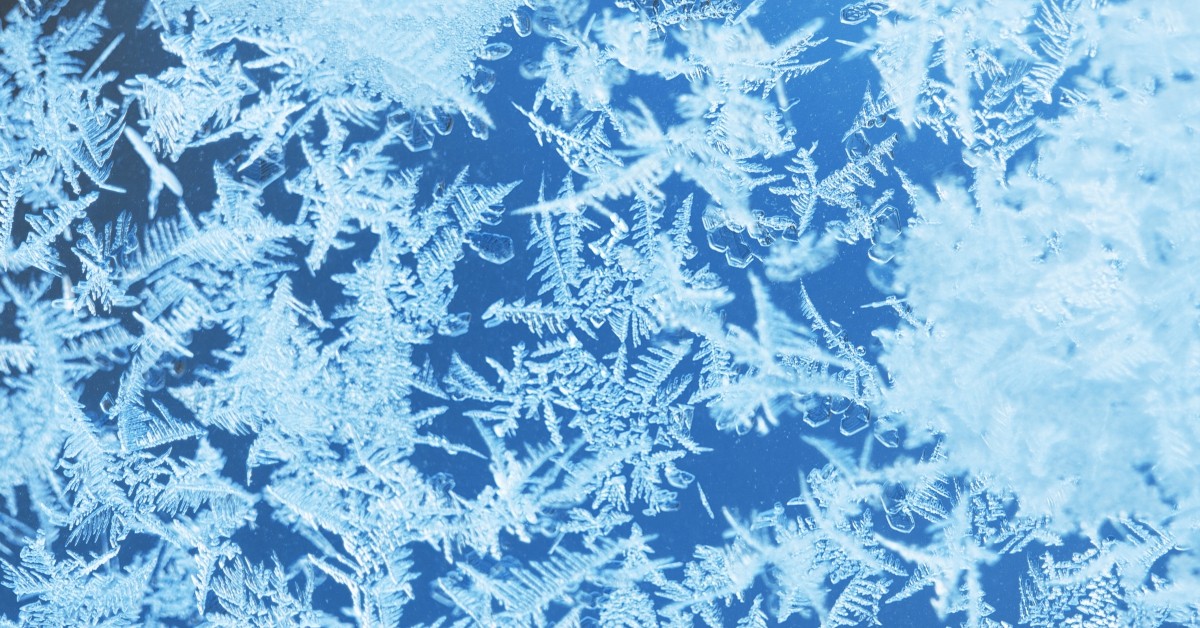When Did Humans Learn How To Freeze Things?
Hundreds of thousands of years ago, humans learned to make fire. But when did we learn how to make ice?
Fire steals the show in human history. Historians and anthropologists agree that learning to control fire was one of the single most important developments in the history of our species. The warmth, light, and protection that it provided allowed humanity to advance across the globe, survive in colder climates, eat healthier, stay up later, and devote less time to survival and more to innovation. No one can dispute the significance of this discovery.
However, our more recent discovery of how to preserve ice and freeze foods and liquids may be nearly as important. It revolutionized global access to food by changing the food preservation game, giving us a way to store and transport perishable items far and wide without having to worry about spoilage. It gave people in tropical climates a soothing way to beat the heat. And, most important of all — it let us invent ice cream!
Here at Swirl Freeze, we love ice cream. Our innovative frozen dessert maker is a froyo machine, malt machine, and ice cream dispenser all in one! It’s the perfect addition to new or established food and catering businesses — customers are delighted with the ability to create a custom dessert from a wide variety of flavor options. We’ve seen first-hand the power of ice cream in driving up revenue for businesses throughout the nation. However, none of this would be possible if we’d never learned how to freeze things.
In today’s post, we’re taking a look at human history to examine one important question: when did we learn to make ice? Follow-up question: when did we use this ability to make ice cream? That’s the real turning point of our species. Read on to find out, and to harness the power of ice cream for your business, contact us to learn more about what the Swirl Freeze machine can do for you!
The Early Days: Ancient Food Preservation
Food begins to spoil the moment it’s harvested, so before we knew how to make ice, we had to get creative if we wanted to store food for any length of time. People in frozen climates would use the natural cold, freezing meat directly on the ice. People in tropical climates dried food in the sun.
Even these crude methods of food preservation allowed humans to put roots down and form communities, an important development in our evolution as a species. Since we didn’t have to consume the kill or eat the harvest immediately, we could settle in one place and had more freedom to focus on other things. This flexibility eventually allowed us to innovate more effective food storage methods. The earliest was a humble cooler.
Preserving the Cold: Icehouses
In cold climates (or temperate climates that experienced freezing temperatures for certain parts of the year), humans began to extend the life of naturally-acquired ice by packing it into ice boxes and icehouses. These were insulated with materials like straw or sawdust, and typically stored close to freshwater lakes or rivers, from which ice would be harvested in the winter months. These ice boxes provided a way to store perishable food in temperate weather, and eventually, wealthy people around the world were building luxurious icehouses and importing ice.
However, preserving ice is not the same as creating it. That breakthrough came with the discovery of a chemical reaction involving salt.
Breakthrough: the Endothermic Effect
When salt is combined with ice, it kick starts a chemical response that draws heat from the surrounding areas. This endothermic effect can be harnessed to pull heat out of liquids until they freeze, and with this knowledge, humans could multiply ice indefinitely. They could also actively freeze different types of foods and liquids. With ice alone, they had only been able to make them cold.
This chemical effect was first described in a thirteenth-century Arab medical book, which itself refers to an earlier text which has been lost to history. It’s unclear exactly when we began using this knowledge to freeze things, but it’s likely that Chinese and Middle Eastern cultures figured it out first. This knowledge was then spread to Europe via the Silk Road, and it fascinated men of science. It also caught the eye of dessert enthusiasts.
Creating Ice Cream: the French Sarbotiere
In our last post, we covered a few interesting facts about the history of ice cream. If you’ve read it, you already know that the earliest form of something like ice cream probably came from China, where ancient texts describe a “frozen milk product.” However, it’s hard to say whether this resembled modern ice cream at all.
The real ice cream breakthrough appears to have happened in Europe, when the rich started mixing sugar with frozen dairy and fruit. The French invented a simple pot freezer called a sarbotiere to mix ice cream from scratch, and from there it took off.
Even so, it was still only the rich and privileged who could afford to have ice cream specially mixed and stored. Fortunately, with modern refrigeration technology, this would soon change!
Finally: Modern Refrigeration and Freezing
By the early twentieth century, humanity had discovered how to evaporate special types of liquids (called refrigerants) to absorb heat and create freezing temperatures. This power would be harnessed in modern fridges and freezers across the globe, providing people everywhere with access to refrigeration technology.
At that point, there was nothing stopping ice cream from taking over the world. According to recent data from data company YouGov Omnibus, today, 96% of Americans eat ice cream, and 86% report eating it as often as once a week. In 2017, the global ice cream industry netted more than $70 billion, and it’s only expected to grow.
Ice cream has been a long time coming, and now it’s here to stay. Are you ready to harness its power for your food business?
Harness the Power of Ice Cream With the Swirl Freeze!
Don’t let our ancestors’ innovations go to waste. We stood on the shoulders of giants to build the Swirl Freeze machine, and now, you can bring the benefits of Swirl Freeze to your food business!
Our all-in-one frozen dessert maker lets anyone quickly and easily create a totally custom dessert from hundreds of flavor and topping combinations. It’s an industrial ice cream and yogurt maker in one! Have your customer select a base (you can choose pretty much anything, from hard ice cream to frozen yogurt to custard) and mix-in toppings, then watch the Swirl Freeze blend it into creation! Between desserts, the “jet cyclone” water feature can clean out the mixing cone in a matter of seconds.
From our countertop-mounting unit to our fully contained dessert cart, there’s a Swirl Freeze machine to meet every business dream. You can attract more customers — and keep them coming back for more — by investing in Swirl Freeze for your catering business or food establishment.
Contact us to learn more about the Swirl Freeze and to inquire about financing options for your business. We can distribute nationwide, so no matter where you’re at, get ready to meet your customer’s sweetest cravings. Give us a call to get started today!



